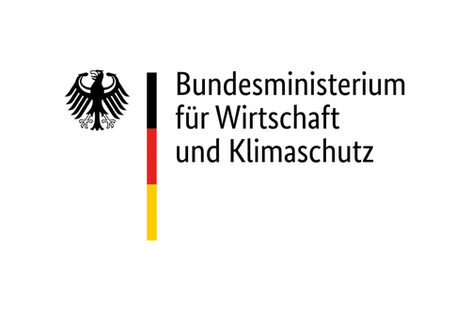About the project
"HATOX" - Radio remote control system with collaborative localization for indoor use based on three-message double-sided two-way ranging
The aim of the "HATOX" project is to develop a new type of radio remote control system based on ultra-wideband (UWB) technology. The core of the system consists of special, newly developed radio nodes, which are equipped with a UWB transceiver. The unknown position of individual subscribers can be determined by means of reciprocal time-of-flight (ToF) measurements of the radio signals between fixed and mobile nodes. UWB radio technology is characterized in particular by high ToF measurement accuracy and favourable coexistence properties with other radio traffic.
The envisaged system is to use the "collaborative localization" approach based on the ToF measurement method "Three-Message Double-Sided Two-Way Ranging". Collaborative localization is an extension of cooperative localization. The cooperation is implemented by allowing special nodes, so-called host tags, to self-localize mobile objects and the position information obtained in this way can be used to locate other nodes. In addition, cooperative localization is extended by machine learning methods. By using special parameters of the UWB signals, it should be possible to learn the characteristic error behavior of the UWB measurements as precisely as possible. This is to take account of the fact that the quality of radio measurements is strongly influenced by environmental factors. It is therefore often not sufficient to create static error models alone. The use of AI-supported methods for detecting and correcting measurement errors is intended to counteract this problem and enable reliable operation of the system in different operating environments.
The intended methods for collaborative positioning with AI-supported error correction increase the coverage of the operational environment with radio infrastructure or require a reduced radio infrastructure while maintaining the same area. The position of mobile nodes can therefore also be determined in places where this would not be possible using conventional algorithms. In addition, the robustness, reliability and accuracy of the overall system is increased. With a modular approach to the development of the radio nodes, application-specific integration of additional sensors, such as inertial sensors, is also planned. Special variants of the radio nodes are also to be equipped with PLC functions.
Applications include locating highly specialized machines, vehicles and/or industrial remote controls. For this purpose, the radio nodes are attached to or integrated into the corresponding devices. The planned system should also be able to address personal safety issues. On completion of the project, a cost-effective adaptive real-time radio localization system with reduced installation and administration costs and high localization accuracy should be available.
Sponsor

Funding code
Funding code: KK5119001BD0
Funding program / Research program
- Central Innovation Program for SMEs (ZIM)
Cooperation/project partners
- Hatox GmbH(Opens in a new tab)
- Institute for the Digital Transformation of Application and Living Domains (IDiAL)

